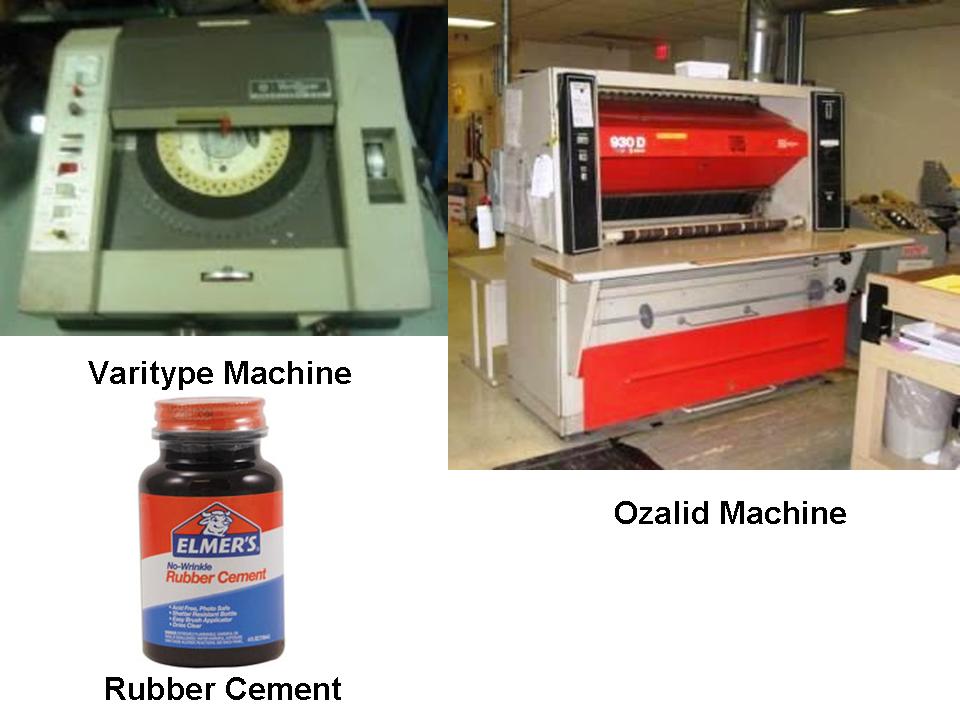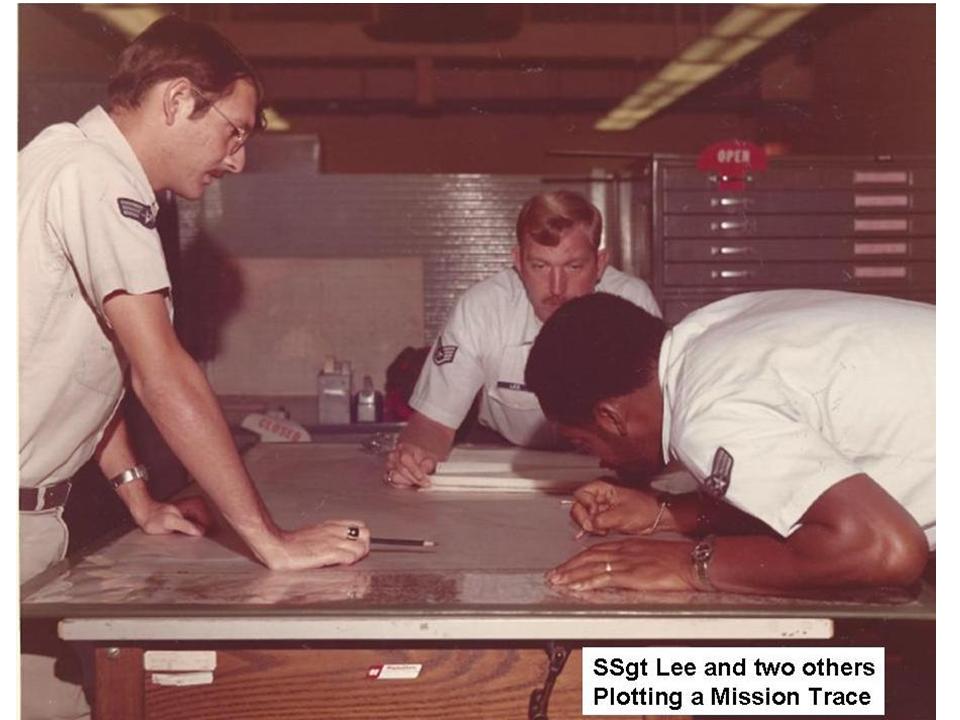The Special Projects Section during the early 70’s was located in the small vault near the latrines behind the Green Door. They were the jacks of all trades, doing the missions traces for the SR-71 and U-2 missions, happy snaps for the staff across the street and any other projects that came in the door. Special Projects later evolved into the Research and Analysis Center, once the Vietnam War ended.

Some of the tools used by Special Projects included the Varitype Machine. Before the days of Power Point, if you wanted a slide made you punched up the annotations on this machine, rotating the wheel for each letter and changing the wheel for different fonts. You then put these on a sheet of acetate and ran it through the Ozalid Machine, which burned the image into another sheet of acetate. If you were making select prints, you would attach the overlay to a negative and send it down to the lab to be printed. The Ozalid was fueled by ammonia, so when it leaked, you knew it. Another staple of the shop was rubber cement, which was used to put mosaics together and other jobs. You used a ball of dried rubber cemet to clean up the project and Special Projects prided itself in having a ball that was probably five inches around. After a Typhoon hit Guam one year, Special Projects was called on to make a mosaic of the entire island using U-2 H-Camera (5″ Frames) prints which had been shoot vertical. The shop spent the whole of Memorial Day weekend working on the mosaic which was monsterous when done, joking we would have to take the roof off Hangar 3 to take a picture of it. Everyone got high on the fumes from the rubber cement in the confined space, making for a memorable 3-day weekend.

Another task was preparing mission traces for U-2 and SR-71 Missions, which would be sent out to the intelligence community with the dupe positive copies of the film which was processed at the 548th.
(Courtesy of Ulrich Seike)